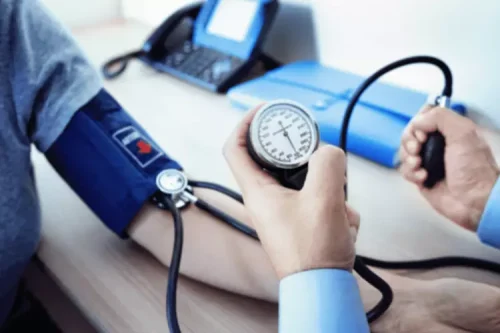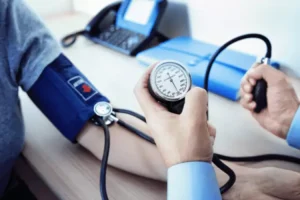Psychological Impact of Alcohol on Driving Abilities #FreeCourse

Alcohol is high in empty calories and can contribute to weight gain and obesity. It also disrupts metabolism by affecting blood sugar levels, leading to an increased risk of type 2 diabetes. A study in The American Journal of Clinical Nutrition found that alcohol consumption slows fat-burning processes, making it easier for excess weight to accumulate.
Urban and Rural Populations
- However, global analyses of alcohol industry CSR activities have consistently found that the alcohol industry pursues and supports the least effective strategies and actively opposes the most effective (Babor et al., 2015, 2018; Esser et al., 2016; Pantani et al., 2017).
- Penalties for aggravated DUI can include longer prison sentences (up to 15 years or more), bigger fines, and required alcohol education or treatment programs.
According to the National Highway Traffic Safety Administration (NHTSA), approximately 11,654 Americans were killed in alcohol-impaired driving crashes in 2020; deaths like these were 30% of all total motor vehicle traffic fatalities in the US. In conclusion, our study confirmed previous findings that clinically significant impairment in driving performance and psychomotor functioning was evident at a BAC of 0.07%. This BAC is above the legal limit for driving of 0.05%, enforced in most countries around the world (World Health Organization et al. 2018), although in some countries, such as England and parts of the USA, a legal limit of 0.08% is enforced. Of importance, our results showed that the objective deficits in driving performance occurred in the absence of a concomitant reduction in self-reported ability.
Lack of Coordination and Slow Reaction Times

You can still be arrested based on other evidence, such as your behavior or the results of a field sobriety test. Refusing the test can also be used against you in court as evidence that you might have been under the influence. For more information about alcohol’s effects on the body, please visit the Interactive Body feature on NIAAA’s College Drinking Prevention website.
How much alcohol is too much?

Then it passes into the bloodstream where it accumulates until it is metabolized by the liver. A person’s alcohol level is measured by the weight of the alcohol in a certain volume of blood. At a BAC of .08 grams of alcohol per deciliter (g/dL) of blood, crash risk increases exponentially. Because of this risk, it’s illegal in all 50 states, the District of Columbia and Puerto Rico to drive with a BAC of .08 or higher, except in Utah where the BAC limit is .05.
Understanding Yo-Yo Dieting And Its Health Risks
Overall, the legal consequences for causing serious injury or death while driving under the influence are harsh and life-altering. The severity of the punishment is often tied to factors like a prior criminal record, the driver’s BAC level, and the specific state’s laws. Car crashes are a leading cause of death for teens, and almost a third of young drivers killed in fatal crashes involved underage drinking. In 2022, 30% of young drivers 15 to 20 years old who were killed in crashes had BACs of .01 g/dL or higher. Alcohol disrupts the balance of gut bacteria, leading to digestive issues such as acid reflux, gastritis, and ulcers.


These factors are dynamic and intersect in myriad ways that are important to understand in a local context. They can contribute to differences in the burden of crashes, fatalities, injuries, heroin addiction and chronic health conditions that result from alcohol abuse and impaired driving among populations based on education, race and ethnicity, socioeconomic status, geography, and so on. In 2012 the BRFSS results showed that the Midwest U.S. Census region had the highest annual alcohol-impaired driving rate at 573 per 1,000 people (Jewett et al., 2015). A recent analysis of FARS data showed that the majority of deaths from alcohol-impaired driving crashes from 2000 to 2013 occurred in the South (45.6 percent), followed by the West (21.9 percent) and the Midwest (21.0 percent) (Hadland et al., 2017). In 2014 the proportion of alcohol-impaired driving fatalities (caused by drivers with a BAC ≥0.08%) among total traffic fatalities in states ranged from a high of 41 percent (Massachusetts, North Dakota, and Texas) to a low of 20 percent (Vermont), compared to a national average of 31 percent (NCSA, 2015). Rural populations also suffer a much higher fatality rate from motor vehicle crashes (alcohol related and non-alcohol related) than urban residents.
Drunk Driving

Chronic alcohol use is linked to depression, anxiety, and an increased risk of suicide. The National Institute on Alcohol Abuse and Alcoholism (NIAAA) reports consequences of drinking and driving that alcohol disrupts neurotransmitters in the brain, leading to mood swings, impaired judgment, and cognitive decline. The WHO states that alcohol is a major contributor to mental health disorders like depression and anxiety, often exacerbating pre-existing conditions. While alcohol is in your system, one of the most common side effects of the intoxicant is delayed reaction times. Unfortunately, delaying your reaction times will only make it more probable that you’ll cause an accident.
Final Thoughts on the Dangers of Drunk Driving
Despite this progress, alcohol-impaired driving persists today, and alcohol-impaired driving fatalities have constituted almost 31 percent of overall motor vehicle crash fatalities in the last 10 years from 2006 to 2016 (Michael, 2017; NCSA, 2016a, 2017a). This fatality rate has held steady, with very little change, for more than 7 years (NCSA, 2016a, 2017a). Moreover, recent data reveal an increase in overall traffic fatalities from 2014 to 2016, including a rise in fatalities caused by alcohol-impaired driving crashes. Among these fatalities in 2016, 10,497 were caused by alcohol-impaired driving crashes, a 1.7 percent increase from 2015 (NCSA, 2017a).
- Many hold promise to improve vehicle and road safety, although most are currently marketed not as safety features but as driver-assistance systems.
- This is especially dangerous when your vision, coordination, and reaction time are also impaired.
- According to the National Highway Traffic Safety Administration (NHTSA), in 2021, there were 13,384 alcohol-impaired-driving fatalities in the United States, accounting for 31% of all traffic deaths.
- A study published in The Lancet found that alcohol-related liver disease is a leading cause of mortality worldwide.
- The impaired judgment caused by alcohol consumption makes drivers more susceptible to distractions while operating a vehicle.
- The smart drinking goals require rigorous evaluation and investigation into their potential for positive or negative impacts (Anderson and Rehm, 2016).
Alcohol industry https://ecosoberhouse.com/article/choosing-sobriety-gifts-10-great-ideas-to-consider/ activities in product development, pricing, promotions and sponsorships, and physical availability of alcoholic beverages are briefly described below. Poor judgment can lead to speeding, running red lights, and other risky driving maneuvers. This is especially dangerous when your vision, coordination, and reaction time are also impaired.


Leave a Reply
Want to join the discussion?Feel free to contribute!